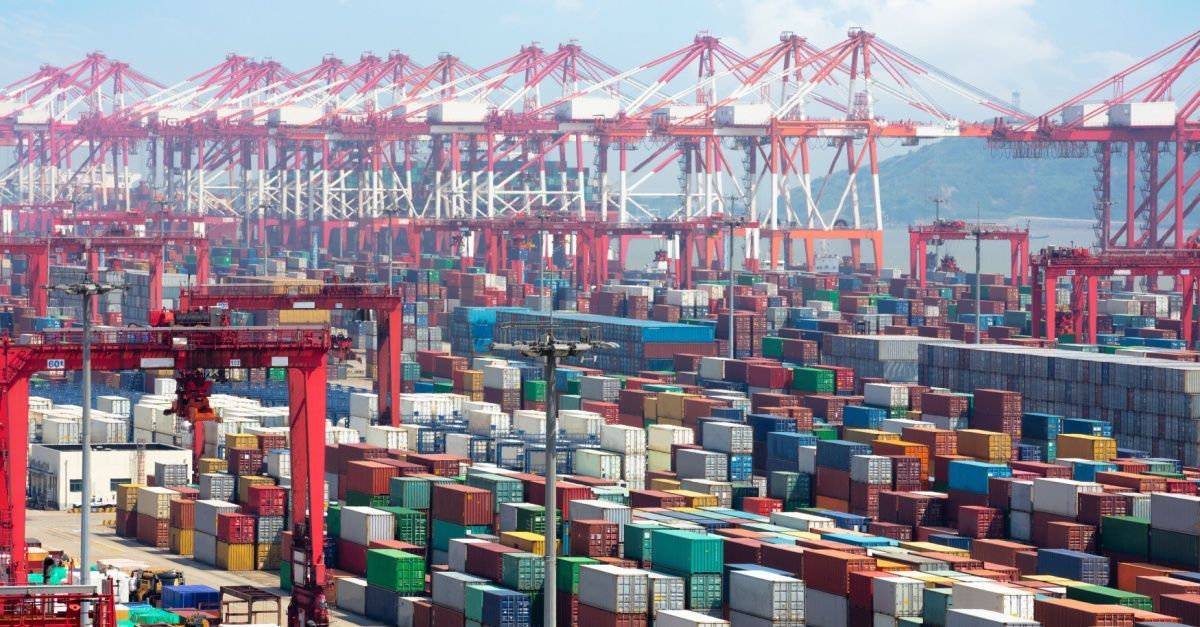Shipping Challenges That Lead to Poor On-Time in Full Delivery (OTIF) in Supply Chain
Blog Post CTA
Shipping Challenges That Lead to Poor On-Time in Full Delivery (OTIF) in Supply Chain
Shipping challenges and disruptions have always been part of shipping and transportation. Things go wrong, and issues arise despite the best plans. The need for fast and reliable on-time in-full delivery (OTIF) remains higher than ever. Understanding the OTIF definition in logistics is equally important.
Shippers and transportation service providers should strive for on-time in full delivery as a standard. Thankfully, the trend is catching on, but many providers are still not fully embracing the OTIF shift. As highlighted by Zippa, “Supply chains provide higher company growth through a wider selection of customized, reliable, sustainable, and delivered as rapidly as possible products. These factors play a key role in growth, and here's how much demand rose from each factor: wider selection (71%), customized (76%), reliable (73%), sustainable (69%), and rapid delivery (76%). The most common Key Performance Indicator (KPI) used for supply chain monitoring is the daily performance at 40%... [along with] cost reduction (35%), production service rate (29%), inventory turn (28%), and production time (27%).” Therefore, keeping close tabs on real-time data reports, supply chain KPIs, and logistics will make it easier to avoid significant shipping delivery challenges and keep the OTIF delivery rate as high as possible. In addition, many shipper benefits come from securing successful OTIF delivery. For example, cold or frozen freight shippers need reefer trucking service providers to get products shipped on time and in full, as the product has a countdown clock to spoilage.
What Is an OTIF Rate, and Why Does it Matter?
The basic definition of on-time in-full delivery is the percentage of orders a shipping company fulfills that reach the final client on time, in good condition, and in the way the customer expected. A shipment delivered on time, with no damage, to the scheduled end customer can be considered a successful delivery and improve a company's OTIF delivery rate. And this applies whether it is LTL, TL, drop and hook shipping, or specialty delivery setup. OTIF metrics highlight the strength and weaknesses of a company and its ability to deliver on its promises and build trust with the customer. This is achieved by delivering according to the terms, despite shipping delivery challenges. Keeping up with real-time supply chain KPIs can help to measure OTIF rates and keep track of overall company performance from start to finish.
Why Do On-Time In-Full Delivery Rates Matter?
Careful monitoring of OTIF delivery rates can also improve customer service and overall company reputation and standing. For example, a 2022 review of the 2022 Bringg Barometer: State of Retail Delivery & Fulfillment" by the LogisticsManagement team noted that next-day delivery was the most prevalent delivery option offered by responders in 2021. A staggering 58% of surveyed retailers said they offered that shipping option, with 56% indicating they are keenly interested in trying to provide 30-minute deliveries by 2025. The report also found that 99% of respondents indicated they want to offer same-day delivery by 2025, whereas that figure currently stands at 35%. OTIF metrics often paint a picture of how a particular company looks regarding delivery service from both an internal industry perspective and an external customer perspective. This is critical for shippers dealing with specialty loads or oversized and overweight freight.
OTIF and Supply Chain KPIs Offer Unique Insights
OTIF rates can help shippers see how often they deliver on time based on their average lead time. While this approach might look good on paper, it is a very focused and internal view that might not highlight or pinpoint all potential shipping challenges, disruptions, and problems. It is a surface-level review of on-time, in-full delivery that does not consider options to optimize transportation services.
The other approach to measuring OTIF delivery success is how often customers report being satisfied and how many, claims and complaints there are for a given period. Utilizing supply chain KPIs can provide shippers with this insight and offer the most accurate measure of on-time delivery. The best industry results mean little if customers are unsatisfied with their delivery experience. This level of understanding is vital to specialty freight loads such as chilled and cold-controlled freight.
The Impact OTIF Delivery Rates Have on Future Deliveries
Tracking on-time, in-full delivery success rates is vital for shippers as it can directly impact future deliveries and shape customer interactions and relationships. For example, a five-day delivery timeline might be excellent from the shipper's point of view. Still, suppose the customer expected 2-3 days. In that case, this might not be considered OTIF in their eyes, which ultimately matters in terms of customer experience, satisfaction, and repeat business.
Reliable and data-backed OTIF metrics and up-to-date supply chain KPIs show shippers their strengths and weaknesses, so they know where to focus and what service aspects need some care and attention. It is easier to deal with shipping challenges and disruptions when armed with data and insights that relate directly to the issues at hand. Real-time data and metrics provide insight into how shippers working with a logistics provider can collaboratively strengthen expedited or express shipping efficiency.
Shipping Challenges That Cause Poor OTIF Rates
There are still numerous shipping delivery challenges and difficulties to overcome, and it looks like 2022 isn't the year for better outcomes, and 2023 might not be the year either. Inventory shortages, labor constraints, capacity difficulties, technology integrations, soaring delivery rates, rising driver wages, fuel costs, and volatile markets are all expected to continue. As a result, setting and monitoring OTIF metrics is essential, as fines for late or damaged goods can quickly add up, and the cost of losing a customer can be devastating to a smaller shipper. In addition, the continued push for on-time, in-full delivery remains high, making it more critical than ever that shippers know what common challenges to look out for as they work to protect their OTIF delivery rates:
Lack of Automated Delivery Tools and Technology
The most significant cause of poor on-time in full delivery is the failure of shippers to embrace modern tools, software, and technology. Overcoming shipping challenges and disruptions is easier with the right tools easily accessible.
Failure to Properly Train and Onboard Team Members
Supply chain KPIs may highlight potential problem areas, but responding to transportation and freight problems is difficult without a solid team. Team members must be trained and appropriately onboarded to protect OTIF delivery rates.
Poor Availability of Carriers and Drivers
Another challenge for complete delivery maintenance and timely monitoring is the current shortage of drivers, containers, and general capacity. Poor tracking of supply chain KPIs makes it even harder to prepare and respond.
Improper Matching of Loads to Modes and Routes
One vital aspect of OTIF metrics is matching loads to drivers and fleet owners. Unfortunately, shipping delivery challenges continue to grow without a clear view of who can drive what loads and who is best qualified for specialty loads.
Inaccessibility of Real-Time Data and Stats
Many shippers today are accessing data through OTIF metrics and KPIs, but they lack the understanding or ability to take that data and apply it to their operations. This misuse of data can dramatically impact OTIF delivery rates.
Not Planning for Differences in Delivery Locations
Many shippers overlook the fluid and unique nature of on-time in full delivery fulfillment. Tracking supply chain KPIs is excellent, but many shippers fail to remember that every pickup and drop-off is different and may present unique challenges for trucking companies.
Failure to Properly Manage Scheduling Tools and Apps
Many typical shipping challenges and disruptions today tie into poor scheduling practices. Manual processes for logging and scheduling hinder proactive exception management caused by delivery changes impacting on-time in full delivery.
Poor Communication With Warehouse Management
Warehouse mismanagement and poor communication between managers and shippers can cause OTIF metrics to suffer. In addition, failure to monitor warehouse and supply chain KPIs makes it more difficult to complete orders, as there is no mechanism to improve processes and overall efficiency.
Weak Network Configuration and Data Collection
Another critical factor that plays into shippers failing to maintain a high on-time in full delivery success rate is a weak system for overall data sharing, analysis, and distribution. OTIF delivery rates will suffer when access to data remains constrained.
Changes to Delivery Schedules, Locations, Details
The final challenge that often lowers shippers' on-time in full delivery standing is their inability to adapt in real-time. When shipping delivery challenges arise, a failure to adjust, react to industry insights, or pivot quickly and accurately will lower delivery success rates.
Partner With Entourage Freight Solutions Today and Reach Your OTIF Goals
OTIF metrics, supply chain KPIs, and other data streams are often the first indication that shippers and managers get that something is wrong. When significant shipping delivery challenges arise, they often are preceded by changes in key metrics that could serve to alert potential issues or concerns.
Shipping challenges and disruptions happen. Shippers cannot avoid every interruption. However, with a reputable service provider mitigating difficulties on behalf of the shipper, disruptions can wane. By monitoring OTIF metrics regularly, shippers improve on time and in full delivery. Contact Entourage Freight Solutions today to learn how to avoid on-time in full delivery problems and overcome them to safeguard your OTIF delivery rate.









